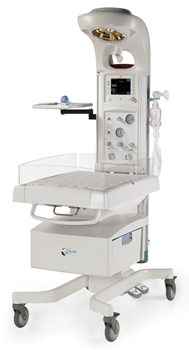 The CHRISTUS Southeast Texas Foundation is excited to announce that we have provided five Panda Bed Warmers for the Center for New Life at CHRISTUS Southeast Texas St. Elizabeth, thanks to the Stephen and Mary Birch Foundation. These Panda Bed Warmers will help fulfill the ultimate goal of equipping each of the 19 labor and delivery rooms with an infant warmer, as they are required to be in each room for delivery. Until now, the Center for New Life only had four outdated warmers.
The CHRISTUS Southeast Texas Foundation is excited to announce that we have provided five Panda Bed Warmers for the Center for New Life at CHRISTUS Southeast Texas St. Elizabeth, thanks to the Stephen and Mary Birch Foundation. These Panda Bed Warmers will help fulfill the ultimate goal of equipping each of the 19 labor and delivery rooms with an infant warmer, as they are required to be in each room for delivery. Until now, the Center for New Life only had four outdated warmers.
St. Elizabeth’s Center for New Life is beginning to see an increase in patients due to the new CHRISTUS Women’s Center, which sends patients to St. Elizabeth to deliver. This patient overflow is intensifying the already urgent need for additional warmers.
Newborns in respiratory distress must be immediately and expertly handled. The warmers are all-in-one stabilization equipment, complete with warming devices and resuscitation devices. Benefits of the warmers include innovative recessed heating, which keeps babies warm while keeping nurses cool; integrated in-bed scale, which makes weighing babies quick and easy; and equipment for resuscitation therapy. The warmers are compact, streamlined, easy to maneuver, and user friendly, which makes them ideal for a high risk and high stress delivery room resuscitation.
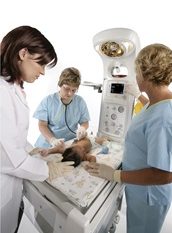 The warmers allow for immediate care for sick newborns with integrated resuscitation available and minimal setup for high-risk deliveries. The warmers also offer easy patient monitoring with integrated, full-color displays that help track the infant’s temperature, weight, oxygen levels, and pulse rate. The compact size allows more room for the nurse, the patient, and the family to interact with the infant.
The warmers allow for immediate care for sick newborns with integrated resuscitation available and minimal setup for high-risk deliveries. The warmers also offer easy patient monitoring with integrated, full-color displays that help track the infant’s temperature, weight, oxygen levels, and pulse rate. The compact size allows more room for the nurse, the patient, and the family to interact with the infant.
The warmers are primarily used for two reasons: resuscitation and stimulation. Last year alone, 300 newborns at the Center for New Life needed resuscitation. The resuscitation devices are available to all of the 2,000+ deliveries each year at St. Elizabeth and provide lifesaving resuscitation therapy in times of emergency. Resuscitation devices include a blender to provide blended oxygen to the infant; a pulse oximeter, which measures the oxygen saturation of the infants; and a NeoPuff, which helps to control lung volume, a widely recognized standard in resuscitation devices for newborn resuscitation.
In order to adhere to the highest standards of care, we must provide a warmer in each labor and delivery room. These warmers are the safest place for nurses to provide resuscitation and warmth.
If a newborn’s temperature drops, it may cause issues with respiration and blood sugar. If the infant is not able to receive immediate warming procedures, it increases the chances of the infant being admitted to the Neonatal Intensive Care Unit, increasing costs for the family, decreasing health outcomes for the infant, and interfering with family bonding. The warmers will increase the chance of the infant staying in the room if there is a minor emergency that can be remedied with the warmer.
CHRISTUS has newly implemented skin to skin contact post birth to make the transition from fetal to newborn life easier. For normal births, this skin to skin time is possible. But for many high-risk births and emergency births, skin to skin is not possible; and for these emergency births, the best option is the warmers, which provide all body temperature, blood glucose, heart rate, and resuscitation support. Our greatest thanks go to the Stephen and Mary Birch Foundation for helping us remain highly prepared with state-of-the-art equipment in times of emergency.
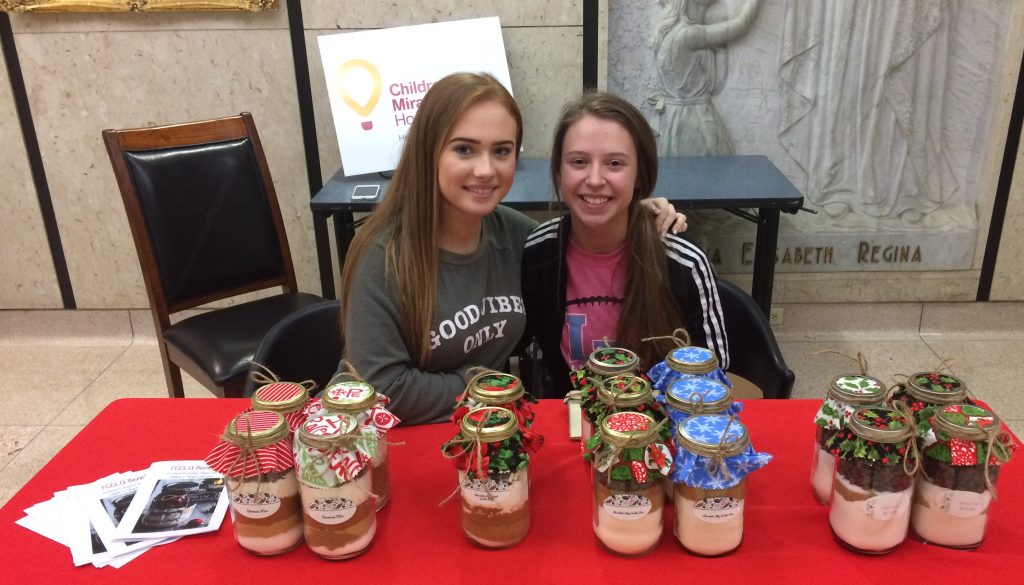 Delaney Harmon and Annie Schwendiman are members of Family, Career and Community Leaders of America (FCCLA) at Lumberton High School. As part of a school project, they chose to raise money for premature babies at their local Children’s Miracle Network Hospital, CHRISTUS Southeast Texas St. Elizabeth. Throughout December, Harmon and Schwendiman made and sold cookie and bread mixes in mason jars. Each jar included a recipe gift tag and all dry ingredients required. The jars were sold at school and various places in the community, including CHRISTUS Southeast Texas St. Elizabeth.
Delaney Harmon and Annie Schwendiman are members of Family, Career and Community Leaders of America (FCCLA) at Lumberton High School. As part of a school project, they chose to raise money for premature babies at their local Children’s Miracle Network Hospital, CHRISTUS Southeast Texas St. Elizabeth. Throughout December, Harmon and Schwendiman made and sold cookie and bread mixes in mason jars. Each jar included a recipe gift tag and all dry ingredients required. The jars were sold at school and various places in the community, including CHRISTUS Southeast Texas St. Elizabeth. After the sale ended, Harmon and Schwendiman made a trip back to St. Elizabeth Hospital to present their donation to Children’s Miracle Network Hospitals. Ivy Pate, CHRISTUS Southeast Texas Foundation President, and Melissa Conley, Children’s Miracle Network Hospitals Program Manager, were thrilled to accept their donation of $600! The money raised will go toward helping babies in St. Elizabeth’s NICU receive lifesaving medical care.
After the sale ended, Harmon and Schwendiman made a trip back to St. Elizabeth Hospital to present their donation to Children’s Miracle Network Hospitals. Ivy Pate, CHRISTUS Southeast Texas Foundation President, and Melissa Conley, Children’s Miracle Network Hospitals Program Manager, were thrilled to accept their donation of $600! The money raised will go toward helping babies in St. Elizabeth’s NICU receive lifesaving medical care.
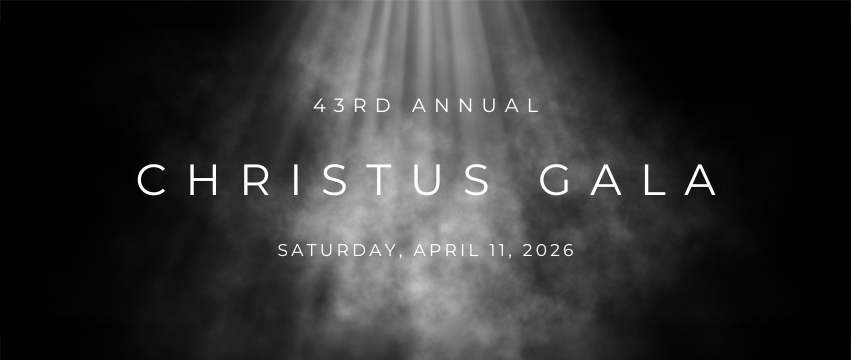
 The CHRISTUS Southeast Texas Foundation is excited to announce that we have provided five Panda Bed Warmers for the Center for New Life at CHRISTUS Southeast Texas St. Elizabeth, thanks to the Stephen and Mary Birch Foundation. These Panda Bed Warmers will help fulfill the ultimate goal of equipping each of the 19 labor and delivery rooms with an infant warmer, as they are required to be in each room for delivery. Until now, the Center for New Life only had four outdated warmers.
The CHRISTUS Southeast Texas Foundation is excited to announce that we have provided five Panda Bed Warmers for the Center for New Life at CHRISTUS Southeast Texas St. Elizabeth, thanks to the Stephen and Mary Birch Foundation. These Panda Bed Warmers will help fulfill the ultimate goal of equipping each of the 19 labor and delivery rooms with an infant warmer, as they are required to be in each room for delivery. Until now, the Center for New Life only had four outdated warmers. The warmers allow for immediate care for sick newborns with integrated resuscitation available and minimal setup for high-risk deliveries. The warmers also offer easy patient monitoring with integrated, full-color displays that help track the infant’s temperature, weight, oxygen levels, and pulse rate. The compact size allows more room for the nurse, the patient, and the family to interact with the infant.
The warmers allow for immediate care for sick newborns with integrated resuscitation available and minimal setup for high-risk deliveries. The warmers also offer easy patient monitoring with integrated, full-color displays that help track the infant’s temperature, weight, oxygen levels, and pulse rate. The compact size allows more room for the nurse, the patient, and the family to interact with the infant.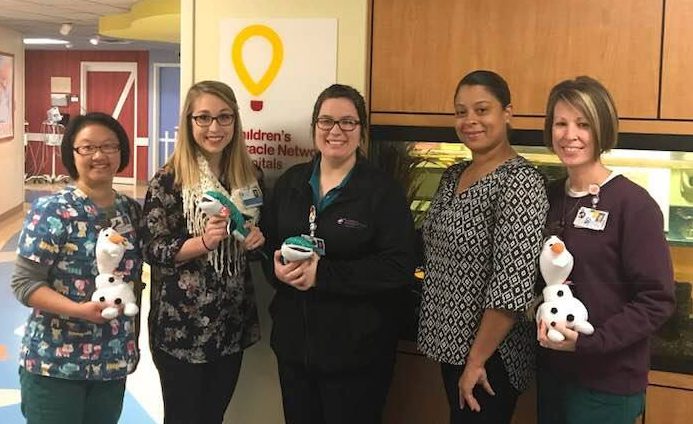 On January 4, Andrea Sterling, a member of Harvest for Lost Souls Church, brought joy to sick and injured kids in Southeast Texas by delivering over 400 plush toys for the kids at CHRISTUS Southeast Texas St. Elizabeth Hospital. The boxes were filled with characters like Olaf from Frozen and Destiny from Finding Dory. During Hurricane Harvey, Somebody Cares America donated an abundance of resources to Harvest for Lost Souls Church, and Andrea made it her mission to make sure these resources continue to help the community. These plush animals are being given to pediatric patients at St. Elizabeth to help them cope with the stress of being in the hospital. “It makes our hearts glad to know so many children will be comforted,” said Sterling.
On January 4, Andrea Sterling, a member of Harvest for Lost Souls Church, brought joy to sick and injured kids in Southeast Texas by delivering over 400 plush toys for the kids at CHRISTUS Southeast Texas St. Elizabeth Hospital. The boxes were filled with characters like Olaf from Frozen and Destiny from Finding Dory. During Hurricane Harvey, Somebody Cares America donated an abundance of resources to Harvest for Lost Souls Church, and Andrea made it her mission to make sure these resources continue to help the community. These plush animals are being given to pediatric patients at St. Elizabeth to help them cope with the stress of being in the hospital. “It makes our hearts glad to know so many children will be comforted,” said Sterling.